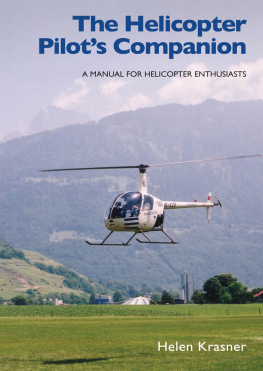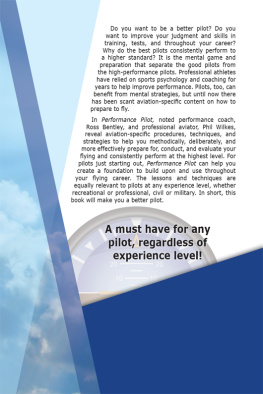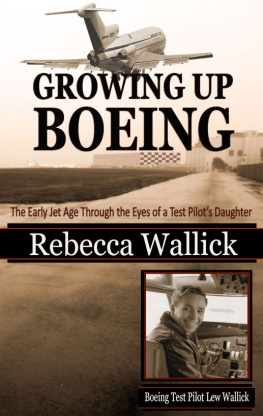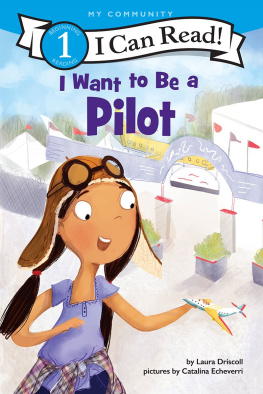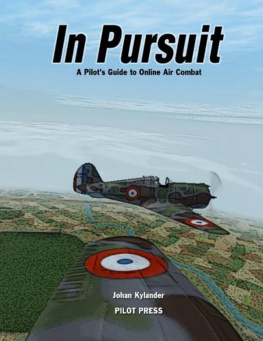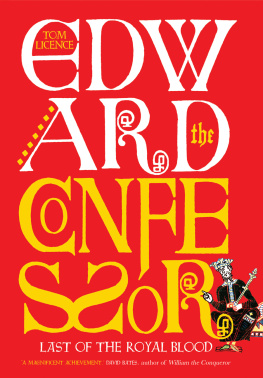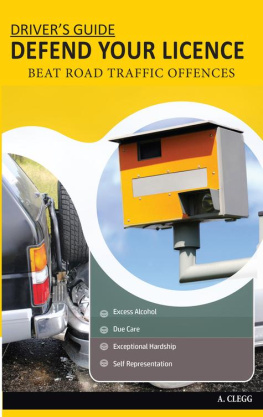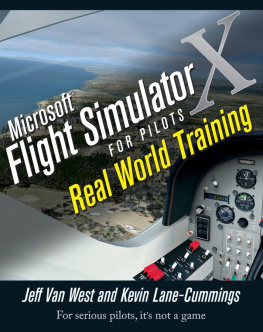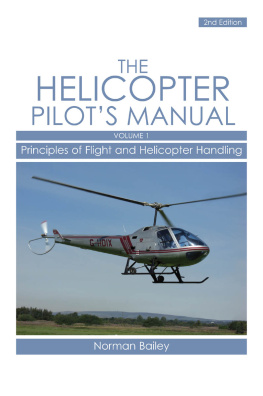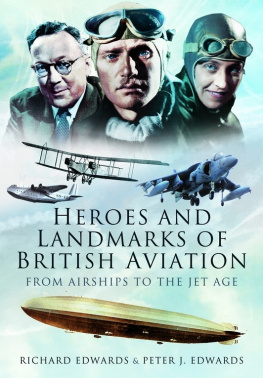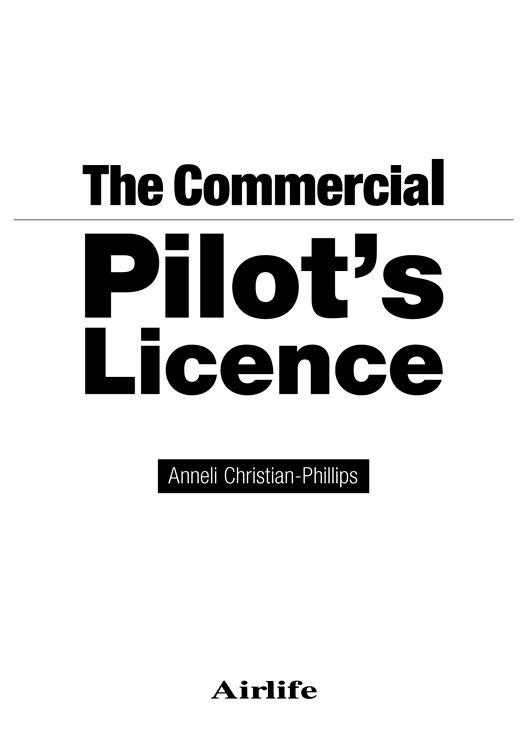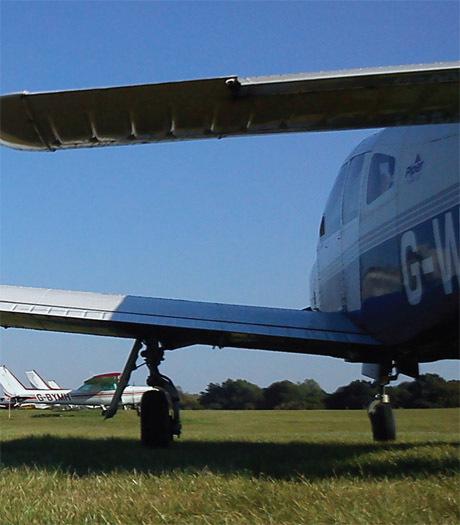First published in 2013 by
The Crowood Press Ltd
Ramsbury, Marlborough
Wiltshire SN8 2HR
www.crowood.com
This e-book first published in 2013
Anneli Christian-Phillips 2013
All rights reserved. No part of this publication may be reproduced or transmitted in any form or by any means, electronic or mechanical, including photocopy, recording, or any information storage and retrieval system, without permission in writing from the publishers.
British Library Cataloguing-in-Publication Data
A catalogue record for this book is available from the British Library.
ISBN 978 1 84797 542 3
CONTENTS
Dedication
This book is dedicated to all my students past, present and future. I am truly blessed to be able to call myself CPL and PPL instructor.
ACKNOWLEDGEMENTS
Flying is more than a sport and more than a job; flying is pure passion and desire, which fill a lifetime.
A. Galland
To mention all those that have a place in my heart (and log book) would take forever, but those who deserve a special mention are my parents, Jane and Don, for their continued love, moral and financial support.
I would like to thank all those that gave their time and help in the preparation of this book, including all those at Crowood. I am truly grateful to Jane for proof-reading all my efforts, who now knows more about commercial flying than she ever should have, without having a PPL or CPL! I must thank Steve for his humour, diligence and support during the last few stages of the publishing process as well as Chris, Tony and Rob for their very useful feedback. And thanks to John and Steve for being model CPL students.
I would also like to thank all those who have helped me during my long and eventful flying career from my first trial lesson on my sixteenth birthday (an unexpected but truly amazing gift), through the PPL, the CPL, the ATPLs, the FI course, the IR and the CPL instructional course. So Nick, Andy, Pete, Lee, Tony, Brian and Annabel thank you. And all those instructors past and present at Stapleford Flight Centre they are a pleasure to work with and share the skies of England with.
My soul is in the sky.
William Shakespeare A Midsummer Nights Dream, Act V, Scene 1
INTRODUCTION
To most people, the sky is the limit. To those who love aviation, the sky is home.
Anon.
Welcome to The Commercial Pilots Licence , or, everything you wanted to know about the CPL but were afraid to ask!
As a private and commercial instructor with over 3,500 hours instructing experience, I have had the pleasure and privilege of seeing hundreds of students start training for their CPL as well as their PPL with the dream of becoming a commercial pilot. But most of them did not seem to know, realistically, what was involved; they had many expectations and assumptions about the kind of flying that was required, but they had no real understanding of what was involved or the skills required to fulfil their dream not that much different from me when I decided to be a commercial pilot.
When I first wanted to be a commercial pilot, I wanted the thrill of teaching people to fly. But I had absolutely no idea about what I would have to do, as far as flying training was concerned, to get this licence. Some of the questions I remember asking my CPL instructor were: do I have to fly any instrument procedures or approaches? Do we get to go into controlled airspace and fly in the airways with the big shiny jets? Is this it?
So, what is the CPL course really all about? This book aims to dispel some common misconceptions and to help you to get a commercial pilot licence with a first-time pass and so becoming a better pilot. It will hopefully tell you in an easy and user-friendly way what you need to know and how to achieve a first-time pass. It is broken down into three parts. Chapters 1 and 2 look at things to consider before you start the CPL; Chapters 3 to 8 cover the CPL syllabus sections; and Chapters 9 to 13 look at what happens during the test and after. The book breaks the exercises you will fly with your instructor into easy, bite-sized chunks to get you ready for that all-important skill test. It aims to make the course more transparent and to make what is expected of you in each lesson more obvious; the book also contains hints and tips I have picked up over the years of instructing and talking to examiners to hopefully get you that first-time pass. (Whatever you may think or hear, the majority of airlines are interested in how many attempts it took you to pass your CPL and Instrument Ratings, and it is often asked on application forms. A series one pass is better than a series two pass.)
So why do you want or even need this book? There are other books available in specialist aviation shops and online that advise you on how to become a private pilot, or how to be a better or safer pilot, or how to become a commercial pilot, and describe the routes taken by the respective authors, but that is not what this book seeks to do. It is your guide to getting through the CPL course and is intended to sit beside the training notes from your training organization to give you the best head start in your professional training.
As you may or may not already know, there is no standard route to becoming a commercial pilot. Every commercial pilot you speak to will have a different story of how and where they did their training, how long it took and what they had to do to get there. The only common thread in the stories of their training is that they will have (at some stage) got the following:
PPL
night qualification
a certain amount of hours as PIC (pilot-in-command)
CPL
In the case of those who have gone on to get an Air Transport Pilots Licence (ATPL), the list will go on to include the following:
Multi-Engine Rating (MEP)
Instrument Rating (IR)
Multi Crew Co-Operation Course (MCC)
Jet Orientation Course (JOC)
Type Rating on a specific aircraft
The main purpose of this book is to help you get the most out of your CPL course as you go through it. But then why not just use the course notes you will have been given by your Aviation Training Organization (ATO)? Often such course notes tell you what you will have to fly but not how to fly it. This book offers real practical advice on the lesson content and how to fly the manoeuvres, rather than just a list of what you are expected to know at the end of it. Although there is nothing in the course that is particularly difficult to fly (that fact alone can cause some disappointment), the standard and quality of flying required right from the beginning can be a real shock to some students I know that I would have really benefited (especially financially) from a book like this before I started my professional training.
Having touched on the subject of financing and cost, here is some advice on financing the CPL. Everyone in the aviation industry knows how expensive flight training is, especially if you want to go all the way and become an airline pilot, and there are precious few ways and means of becoming a commercial pilot that arent self-funded. However, there are some bursaries and scholarships available for students from various organizations and charities. Details of them can be found in flying magazines and newspapers (such as Flight Training News ), especially at the beginning of a new year. Obviously, there will be restrictions on age or experience, or what kind of training you are doing, but do some research and apply for them if you fulfil the required conditions, as the money has to go to someone. I was lucky enough to receive a bursary from the Air League when I was training, which helped me enormously in the early years, so a big thank you goes to them!


